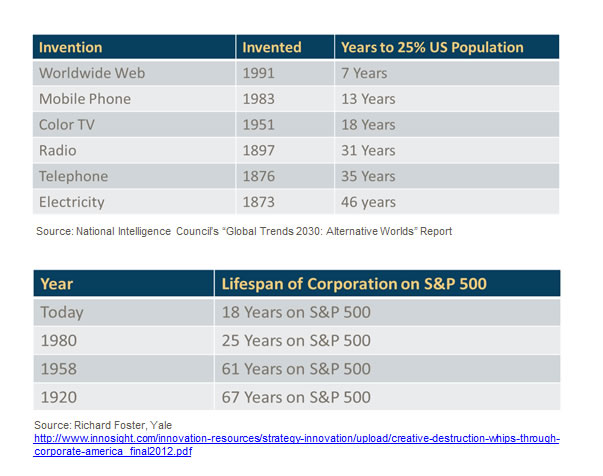 This is the second in a two-part series of blog posts by Robert Moran based on his presentaiton at the Trustees Research Symposium.
This is the second in a two-part series of blog posts by Robert Moran based on his presentaiton at the Trustees Research Symposium.
In my last blog post, I talked about how corporate crises are broadly predictable and how change is becoming discontinuous. As two examples of accelerating change:
- We are scaling innovative technology much more quickly than we ever had before
- This technological disruption is reducing the lifespan of our largest companies

And this means that the 21st century is almost certain to be turbulent and disruptive, birthing entirely new types of corporate crises. With this in mind, Boards and executives should be asking what types of crisis events they are likely to see in the 21st century. Although it may be difficult to map specific 21st century crises, we can clearly identify the drivers of 21st century corporate crises.
The top 10 are:
- Ageing: Extreme ageing and generational tension across society.
- Resource Scarcity (especially water): National and NGO pressure on corporations with intensive water or strategic material use.
- Individualism and DIY: Challenges to traditional make and sell models, especially in the energy space.
- Replication and 3D printing: Extreme challenges to intellectual property stemming from copying and 3D printing.
- Automation: Social resistance to automation (robots and algorithms) “taking” traditional manufacturing and linear intellectual jobs.
- Localization: The countertrend against globalization.
- BioEthics: Advances in genetics outpacing moral standards and traditional beliefs.
- Extreme Transparency: Organizations learning to live in a world where Glassdoor transparency is universal and where every person place and thing has a numeric reputation rating.
- Big Data, Surveillance and Nudging: Social resistance to and acceptance of surveillance and data driven “nudging.”
- Alternative economic models: Challenges to traditional economic models and currencies.
With these turbulent ten in mind, corporations need to work to better anticipate 21st century crises.
One simple solution is to analyze their exposure to these 10 trends. Another is to build an early warning system that detects “weak signals” for these emerging crises. But the most important thing it can do is to build a listening and scanning process to detect these.
Robert Moran is a Partner at Brunswick Insight in Washington, DC.



